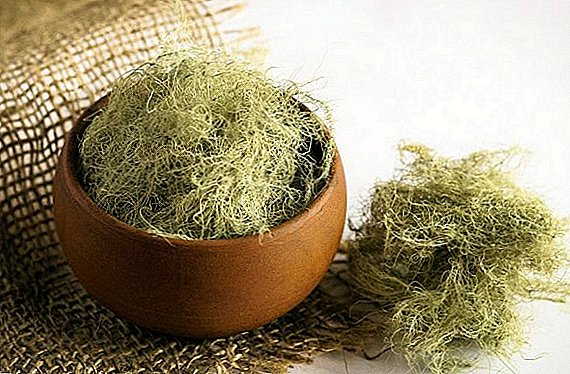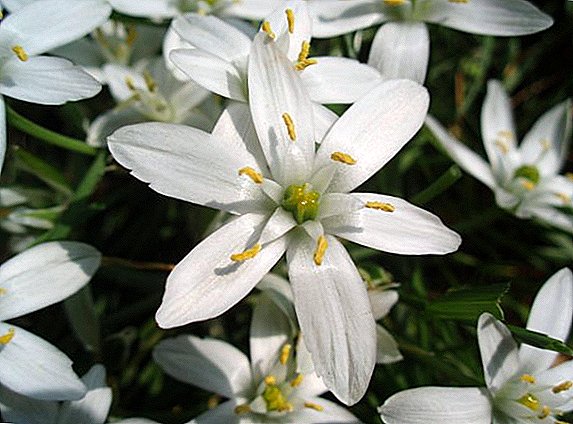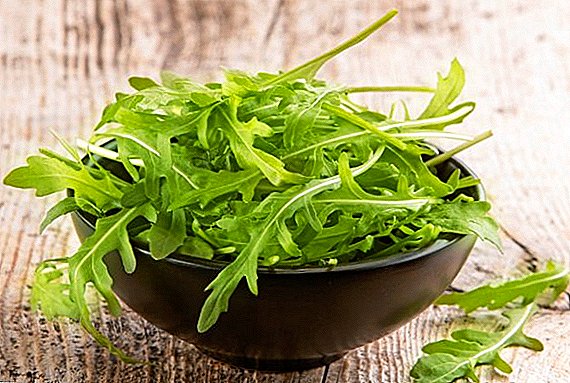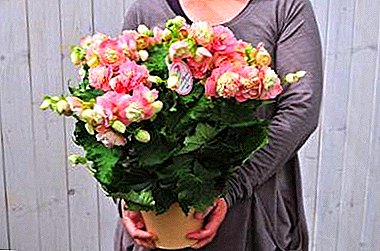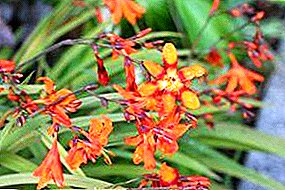
Crocosmia is an ornamental plant not from our latitudes.
However, it is so cheerful and attractive that it has long taken its place in the hearts of domestic flower growers.
Its lush greenery in combination with delicate buds adorns the flowerbeds in the most arid areas, where other brothers from the iris family retreat.
Why you should start growing crocosmia:
- it is unpretentious, easily adapts to different conditions;
- well forms the landscape, even without inflorescences;
- pleases the eye during flowering;
- do not require careful maintenance;
- almost not sick.
If you decide to start a crocosmia or, as it is also called, montbrecia, it is worth getting closer acquainted with some features of this plant.
Read detailed information about caring for hymenocallis.
Find out here about the features of planting and care forsythia.
Details on comb cellosis: //rusfermer.net/sad/tsvetochnyj-sad/vyrashhivanie-tsvetov/vyrashhivanie-naryadnyh-tsvetov-tselozii.html
Appearance
There are more than fifty species this perennial. They are distinguished by the height of the shoot (from 60 to 150 cm), the shape of the leaves (linear, xiphoid), the color of the flowers (range from yellow to bright red).
 In wild species, inflorescences are smaller and more muted shades; in breeding ones, they are brighter and larger.
In wild species, inflorescences are smaller and more muted shades; in breeding ones, they are brighter and larger.
The flowering time also differs: from the middle of summer to the end of September.
The duration and intensity of this process depends on how well the soil is selected and the lighting area for their placement.
Growing up
When breeding Crocosmia should be borne in mind that it multiplies in the following ways:
- seeds;
- bulbs;
- kids.
The plant quickly conquers large areas. It is therefore necessary to ensure that the seeds or bulbs remain in their intended places.
If you want to avoid self-seeding, remove the inflorescences as soon as they wilt. In the future, the collected seeds can be used. Planted in this way, plants can throw flowers in the second year.
Bulbs-kids actively appear from the end of September. During October and before the first frost, you can collect them. Crocosmia, diluted with bulbs, bloom longer and more intensely.
Want to see inflorescences as early as July? Acquire early flowering varieties: Crocosmia paniculata, Crocosmia masoniorum. Of the late flowering the most popular are Star of the East, Emily McKenzie, Spitfire.
Landing
 The bulbs are planted in moist soil (ideally chernozem) to a depth of 10-15 cm. Make sure that they not too thick.
The bulbs are planted in moist soil (ideally chernozem) to a depth of 10-15 cm. Make sure that they not too thick.
A distance of 10 cm between tubers will be optimal.
It is possible to fill in any area with them, but large groups of montrebies look better.
Choosing a place
Since the Crocosmia is from the African continent, it is very loves the sun. Therefore, the area for planting this plant should be well heated in the warm season.
Small penumbra is also allowed. The more light that falls, the larger and more abundant the color will be.
An exception is the Crocosmia pottsii variety. It comes from the marshland, therefore it transfers the moist soil better than its relatives. However, the bright sun is necessary for him.
Orchid, very exquisite flower. Learn the rules of watering orchids.
Also find out what wicky watering of violets is: //rusfermer.net/sad/tsvetochnyj-sad/vyrashhivanie-tsvetov/fitilnyj-metod-poliva-fialok.html
When do I need to limit the distribution of Crocosmia?
Limit distribution should be if:
- if the plant is part of a combined flower bed. With the rapid spread it will break the landscape pattern;
- if you want to achieve large and persistent inflorescences. The thicker crocosmia grows, the smaller and smaller the flowers. On the most overgrown areas can only be green.
When should montbretia be allowed to grow?
If you plan to use the plant as a garden cover. Greens spread crocosmia looks very good and without flowering.
This cover is good alternative to lawn grass.
Care
Even unpretentious plants need attention. Therefore, do not forget about:
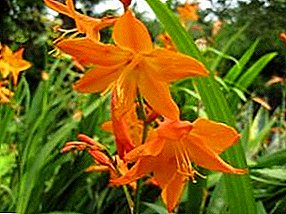 Watering. It should be infrequent (once a week), but abundant. If the summer is rainy, it is enough to loosen the soil after the precipitation.
Watering. It should be infrequent (once a week), but abundant. If the summer is rainy, it is enough to loosen the soil after the precipitation.- Top dressing. In the spring during the rapid growth of the Crocosmia, nitrogen fertilizers may be needed. In the summer - potash supplements. They are needed for good bud formation. A top dressing with 10% mullein solution is also welcome.
- Pest control. The enemies of the plant are Putin's mite, Medvedka, and thrips. To numerous herbal diseases, the plant is quite stable.
Learn how to care for your garden by reading the article on our website.
All about the features of landing a hazel grouse chess, read the link: //rusfermer.net/sad/tsvetochnyj-sad/vyrashhananie-tsvetov/poskadka-i-vyrashhivanie-shahmatnogo-ryabchika.html
Winter storage
Crocosmias tolerate winter well on the ground. But, if your area is traditionally hard frostsit is better to cover the plant indoors.
To do this, in the late autumn one should dig up the whole crocosmia, leaving an impressive part of the soil at the roots. Strain on the bulbs with this method of storing it not worth. The prepared plant is planted in a pot or down into the basement, where it is stored until early spring.
If there is no basement, you can use dry storage. For him, crocosmia should be dug out, divided into individual bulbs and remove the upper part (stem and leaves), leaving about 5-7 cm.
However, if there is an opportunity, it is better to leave crocosmia to winter on the ground. So it will start to grow earlier, the flowers will be larger, and the plant itself stronger.
The beds should be sheltered from the frosts as late as possible, and opened in early spring, when the strongest frosts are over. As a shelter, you can use dry leaves, shavings, straw, agrofibre.
 Wintering of plants depends on their species.. For example, Crocosmia masoniorum, Crocosmia Lucifer is quite hardy. And Star of the East for the winter is better to dig. This species does not tolerate cold.
Wintering of plants depends on their species.. For example, Crocosmia masoniorum, Crocosmia Lucifer is quite hardy. And Star of the East for the winter is better to dig. This species does not tolerate cold.
Experienced gardeners also recommend combine different storage methods. So, if part of Crocosmia will freeze out on the ground, you can always restore the population of the bulbs stored in the room.
Crocosmia is an ideal plant for a novice grower. Even with minimal care, it will delight the breeder with lush greens, forgive flaws and miscalculations in watering and feeding.
With proper care, you will be a luxurious flower garden and delicate aroma of saffron, spreading from a cut bouquet throughout the house.


 Read detailed information about caring for hymenocallis.
Read detailed information about caring for hymenocallis. Orchid, very exquisite flower. Learn the rules of watering orchids.
Orchid, very exquisite flower. Learn the rules of watering orchids. Watering. It should be infrequent (once a week), but abundant. If the summer is rainy, it is enough to loosen the soil after the precipitation.
Watering. It should be infrequent (once a week), but abundant. If the summer is rainy, it is enough to loosen the soil after the precipitation. Learn how to care for your garden by reading the article on our website.
Learn how to care for your garden by reading the article on our website.